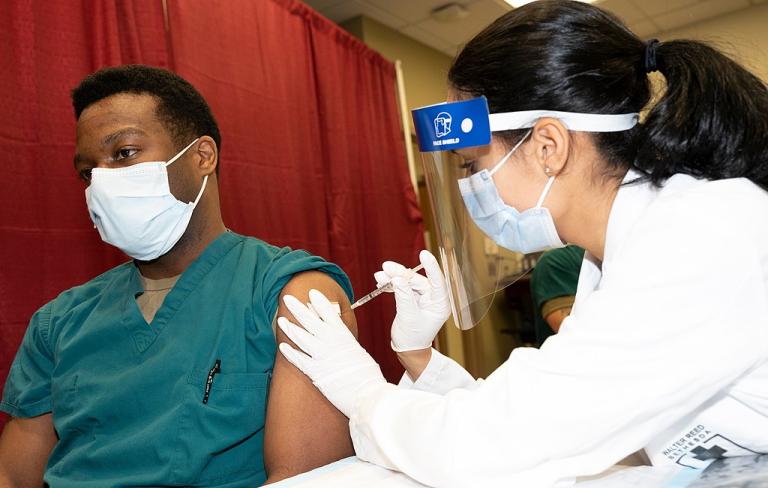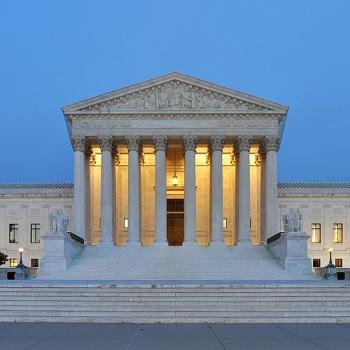
You can break down statistical data in any number of ways. In looking at COVID vaccination data, you can sort it out by race, political affiliation, religion, etc., etc. Thus we learn that the biggest resistance to getting vaccinated can be found among Republicans, evangelicals, blacks, and hispanics.
We can speculate why that is–generally, these groups are highly suspicious of the government–and, as that government is doing now, blame them for the resurgence of the Delta variation and lock down the nation again to protect the unvaccinated against their will.
But there are other ways to slice the data. One obvious way is by age. When we do that, a different picture emerges.
In his article It’s Time to Rethink What the ‘End’ of the Pandemic Looks Like, Jack Shafer of Politico says this (my bolds):
Any adjustment of our Covid-19 mindset should include a keener understanding of why so many people have rejected vaccination. That opposition, both passive and aggressive, appears to be linked to age. Older people, especially the 65-plus crowd, visit their doctors all the time compared with their younger cohorts. For them, a doctor or hospital visit is one of the main social events on their calendars. They become so accustomed to getting poked and bled that receiving a bolus of Pfizer in the upper arm is about as eventful as having a blood pressure check. Accordingly, they’ve taken to the vaccine like no other group in the country. An astonishing 91 percent of adults between the ages of 65 and 74 have taken at least one dose of Covid-19 vaccine. They took it because their friends were taking it. They took it because they trust their doctors and their doctors have urged them to vaccinate. And they took it because they’ve absorbed the lesson of Covid-19’s deadliness — about 80 percent of the people who die from Covid-19 in the United States are 65 and older.
As a member of this demographic, I am trying to be personally offended about what he says about visiting the doctor being one of our main social events, but I have to grudgingly concede that he has a point! And we are indeed used to being poked and bled, so getting a shot is no longer the big deal that it once was.
Furthermore, Shafer shows that the vaccination rate goes down according to age: “This appetite for vaccines declines as you descend the age ladder: 76 percent of those between 50 and 64 have taken at least one dose of a Covid-19 vaccine; 66 percent of the 40-49 age group; 57 percent for 25-39; 52 percent for 18-24; 48 percent for 16-17; and 37 percent for 12-15.”
Shafer points out that such variations by age are not irrational. The older you are, the greater the chance of getting seriously ill or dying from COVID, and the younger you are, the less likely you are to have serious symptoms.
And since the demographic that suffered 80% of the deaths is now 91% vaccinated, that is very good news in the battle against the pandemic. This explains why, though the infection rate from the Delta variant has sent the number of infections soaring, the number of deaths, at least right now, is low.
True, progress needs to be made. Now younger adults make up a bigger percentage of deaths, so they need to protect themselves also, as we oldies have done.
Shafer says that we need to determine our “tolerance level” for the disease, realizing that we are unlikely to eradicate it completely but that we cannot keep shutting down our society in an effort to eliminate all risk. We don’t do that with other diseases. He points out that in the 2017-2018 flu season, influenza put 810,000 Americans in the hospital and killed 61,000. Those are terrible numbers, but we didn’t panic, mandate masks, or lock down the economy. Could we accept numbers like that for COVID, treating it as just another, to quote Hamlet, of “the thousand natural shocks/That flesh is heir to”?
Photo: “Army Cpt. Isaiah Horton, a doctor at Walter Reed National Military Medical Center, receives a COVID-19 vaccination, Walter Reed National Military Medical Center, Bethesda, Md., Dec. 14, 2020.” (DoD photo by Lisa Ferdinando) U.S. Secretary of Defense, CC BY 2.0 <https://creativecommons.org/licenses/by/2.0>, via Wikimedia Commons














